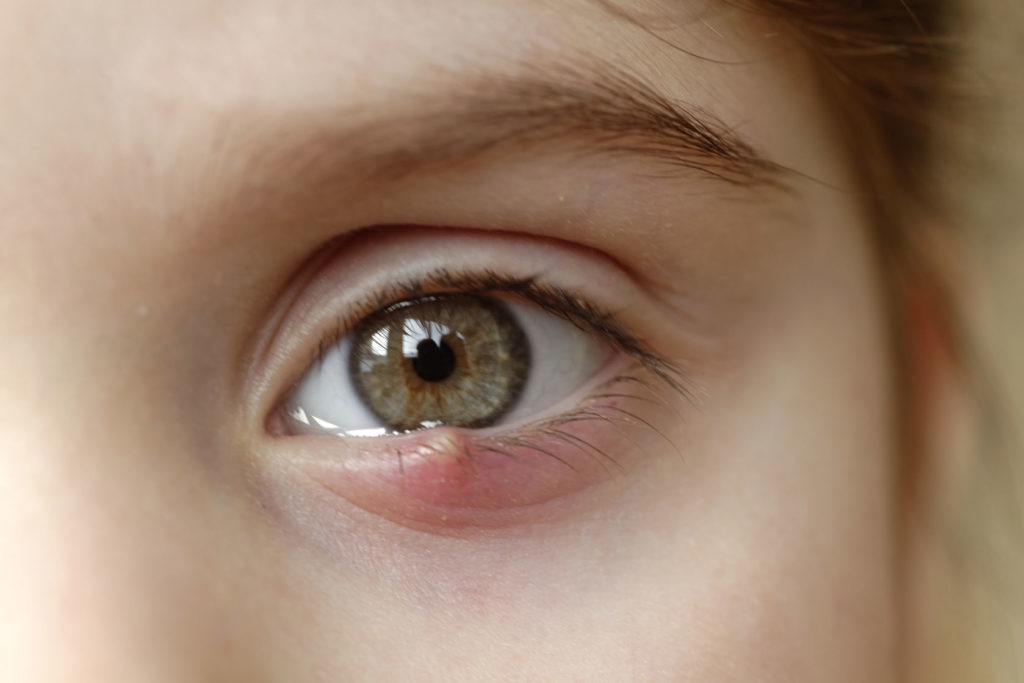How to Get Rid of That Painful Stye on Your Eye
February 20 2019Whatever you do, do not try and pop it!

When you have a bump on your skin, it’s easy to assume it’s a pimple. But it’s a little more confusing when it’s close to your eye. Seriously… what is that?
If the bump is on or near your lash line, you’re likely dealing with an eyelid infection that’s known as a stye. It’s easy to see how you could confuse it with a zit, though. Just like pimples, “styes are usually painful, irritating, and red,” says dermatologist Dr Gary Goldenberg.
And, while they show up on or near your eyelid, they don’t usually cause vision problems, he says-they just feel terrible. This angry bump is more common that you’d think, but it doesn’t make dealing with one any less uncomfortable. Here, dermatologists explain why eye styes pop up and what you can do to find relief fast. Plus, how to lower your odds of dealing with one in the future.
What is a stye, exactly?
Styes are “very similar to infected pimples or ingrown hairs, they just occur on the eyelid,” says dermatologist Dr Joshua Zeichner.
Like the rest of your skin, your eyelids have oil glands, and when one of those oil glands becomes infected (usually by the bacterium staphylococcus), a red, angry bump that is tender to the touch can appear, says Dr Zeichner.
For the record, styes usually aren’t contagious, although “technically, the bacteria causing the stye can be spread through direct contact,” he adds.
What causes a stye?
While it’s possible to get a stye and have no clue why it happened, Dr. Goldenberg says it’s usually caused by less-than-ideal hygiene, including the following:
- Touching your eyes without washing your hands first
- Putting in your contact lenses without washing your hands first
- Putting in your contact lenses without thoroughly disinfecting them first
- Leaving on your eye makeup overnight while you sleep
- Using old eye makeup, such as eyeliner and mascara
Also, if you struggle with a condition like blepharitis (chronic eyelid inflammation) or rosacea (a skin condition that causes persistent redness), you’re at an increased risk of developing styes on your eyes, says Dr Goldenberg.
How to get rid of a stye
It’s tempting to want to pop a stye like a pimple, but this is the last thing you should think about doing. Keep your hands off of it! “Popping it can spread infection,” Dr Goldenberg explains.
Instead, take the following steps to help reduce swelling and relieve pain until the stye clears on its own:
- If you use contacts, wear your glasses until the stye clears
- Use a mild cleanser, like baby shampoo, to keep your eyelids clean
- Apply a warm compress to the bump several times a day for a few minutes at a time to help it open up
Styes usually go away on their own within a few days, Dr Zeichner says, so if you notice it’s been 48 hours and you’re still struggling or it doesn’t seem to be getting better, it’s time to call a doctor. In some cases, you may need treatment with antibiotics to help it go away. If the stye is particularly stubborn, your doctor may even need to make a small incision in the bump to drain the pus. Again, do not try this yourself.
How to prevent a stye on your eye
Styes aren’t fun to deal with, but there are a few things you can do to lower the odds of developing one.
Practice good hand hygiene
Wash your hands well and often-and keep them away from your eyes as much as possible, says Dr Goldenberg. You should also wash your hands well before you handle your contacts and do your best to keep your lenses clean before you put them in your eyes.
Keep your eyelids clean
You’ll want to make sure you thoroughly remove any eye makeup before you head to bed. It’s also a good idea to throw out old makeup. Simply check the packaging, which should be labelled with how long the product is good for after it’s been opened.
Apply warm compresses
If you’ve had a stye in the past, keeping up with those warm compresses on your lids could lower the odds that you’ll develop one again in the future, Dr Goldenberg says.
The bottom line: If you are unlucky enough to develop a stye, don’t panic. Most go away on their own within a few days. But, if at-home treatments aren’t helping or your stye seems to be getting worse, don’t hesitate to call your doctor to prevent the spread of infection.
Sourced from Prevention.
